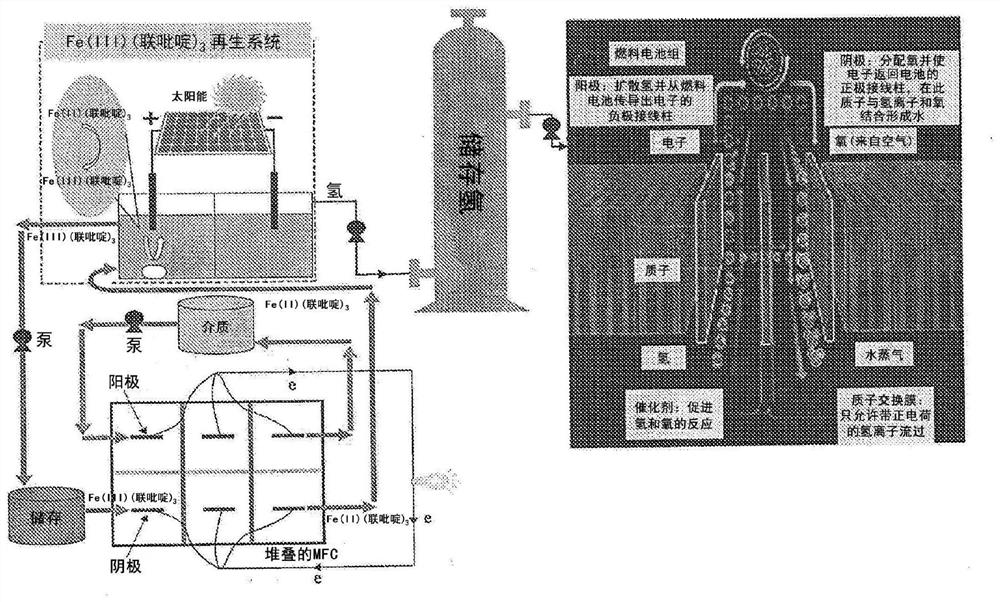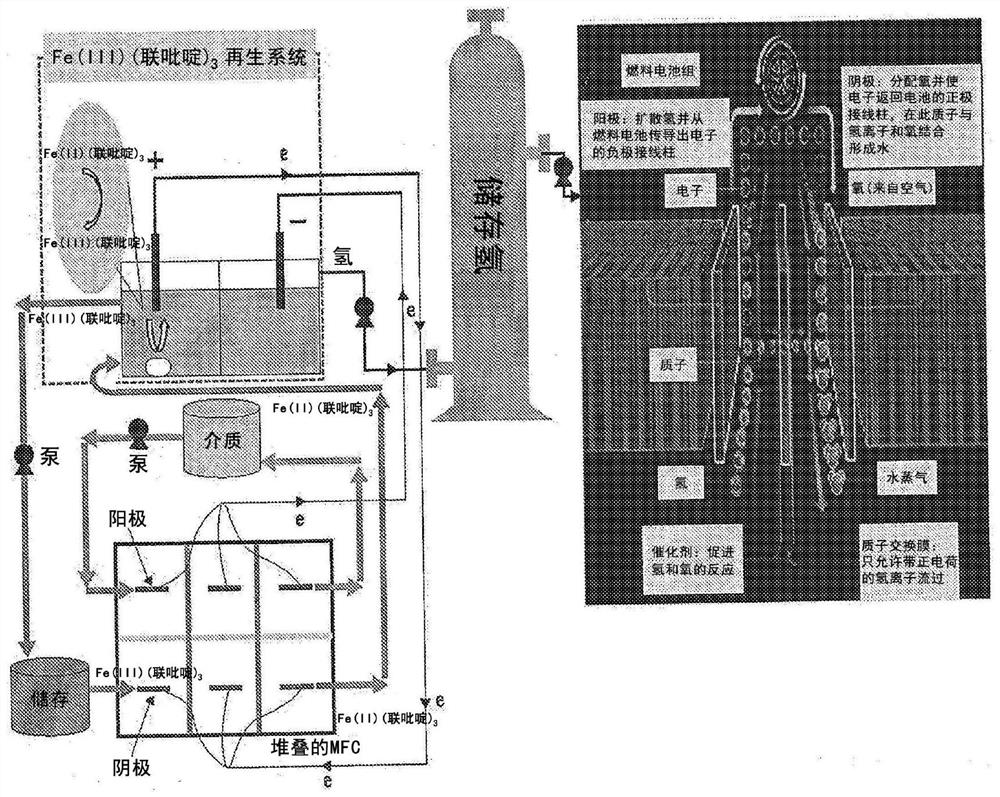Microbial fuel cell using electron acceptor having high reduction potential and method for producing electrical energy using same
A technology of fuel cells and microorganisms, applied in biochemical fuel cells, fuel cells, battery electrodes, etc., to achieve the effects of increasing life, low reduction potential, and preventing leakage
- Summary
- Abstract
- Description
- Claims
- Application Information
AI Technical Summary
Problems solved by technology
Method used
Image
Examples
Embodiment
[0068] Preparation of MFCs for polarization experiments and discharge experiments ( image 3 )
[0069] To investigate the effect of electron acceptors in MFC performance, a two-chamber microbial fuel cell design with an anode compartment with a working volume of 500 mL and a cathode compartment with a volume of 600 mL was used.
[0070] To test the electrodes, carbon brushes (D 4cm*L 7cm) or carbon felts (W 4cm*H 7cm) were used as anode materials. The carbon brushes used had a diameter of 4cm and a length of 7cm and provided an area of 28cm 2 . In addition, a graphite plate (2.5cm*6cm) or a carbon brush was used as the cathode.
[0071] An external circuit resistance of 1000Ω was connected between anode and cathode except during polarization experiments. The anode and cathode were separated with a pretreated ion exchange membrane (AEM, AMI-7001 or CEM, CEM-7001, Membrane International, USA (USA)).
[0072] Anaerobic inoculum was collected from anaerobic sludge previo...
PUM
| Property | Measurement | Unit |
|---|---|---|
| diameter | aaaaa | aaaaa |
Abstract
Description
Claims
Application Information
 Login to View More
Login to View More - R&D
- Intellectual Property
- Life Sciences
- Materials
- Tech Scout
- Unparalleled Data Quality
- Higher Quality Content
- 60% Fewer Hallucinations
Browse by: Latest US Patents, China's latest patents, Technical Efficacy Thesaurus, Application Domain, Technology Topic, Popular Technical Reports.
© 2025 PatSnap. All rights reserved.Legal|Privacy policy|Modern Slavery Act Transparency Statement|Sitemap|About US| Contact US: help@patsnap.com



